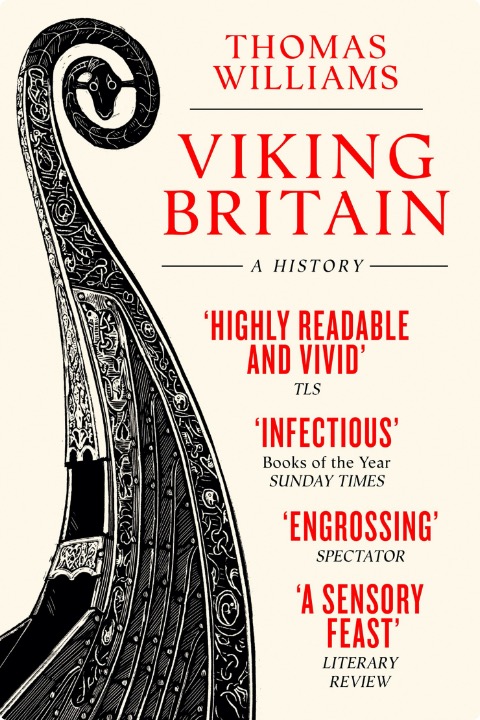Some oleaginous interviewer once suggested to Winston Churchill that he was the greatest Briton who ever lived. The grand old man considered the matter gravely. ‘No,’ he replied at length. ‘That was Alfred the Great.’
In his hefty, hard-to-pick-up History of the English-Speaking Peoples, Churchill expatiated on King Alfred’s foremost quality: it was his ‘sublime power to rise above the whole force of circumstances, to remain unbiased by the extremes of victory or defeat, to persevere in the teeth of disaster, to greet returning fortune with a cool eye, to have faith in men after repeated betrayals’.
Remind you of anyone? But perhaps it isn’t surprising that Churchill should have singled out for reverence another wartime leader who had saved his island from a savage horde. Alfred’s ultimate victory over the Vikings remains our foundation myth, a ninth-century fore-echo of the clash with Nazism. And this, according to Thomas Williams in his robust new book, is one among many reasons why the Vikings have tended to be demonised by history. The more brutal and bristle-bearded the enemy, the greater is Alfred’s Greatness for subduing them. And the greater, therefore, are we.
Viking Britain — an engrossing account of the skirmishes, wars and final symbiotic absorption that occurred between Anglo-Saxons and Scandinavians from the late eighth to the early 11th century — suggests that another motive for exaggerating the differences between the Vikings and ourselves is a queasy awareness of the similarities. The idea is that the Anglo-Saxons glimpsed in the enemy a garish, nightmarish image of their former selves. After all, it hadn’t been so many generations earlier that they too had arrived by sea, calling on a comparable pagan pantheon (they worshipped Woden; the Vikings Odin) for the courage to ride roughshod over the natives, rape their women and ransack their wealth.
Since then, they had converted to Christianity. Which made them the good guys, up to a point. Yet as Catherine Nixey has detailed in a recent book, the early Christians were often as vile and violent as their foes. She focused on the Middle East and Maghreb. Williams describes the brutality of Charlemagne’s wars against the Saxons in northern Europe, how in 782 the Emperor had 4,500 prisoners beheaded on the banks of the Weser, and later decreed that anyone who refused baptism should be executed. It may have been this, Williams suggests, that persuaded the Scandinavians to step up their raids to the West. Fearsome as they were, they were fearful of these ruthless, self-righteous Christians in the South, who worshipped a son-sacrificing God and ritually ate his flesh. There’s an argument that their long-shafted, two-handed, horse-slaying axes were developed in response to the threat from evangelical Frankish cavalry.
Williams’s revisionist zeal doesn’t prevent him from admitting that the Vikings were, in some ways, very different from us. Their slave girls were occasionally forced to immolate themselves on the funeral pyres of their deceased masters, having first submitted to gang rape at the hands of their friends and relatives. And the warriors had a peculiar way of celebrating victory. They would bugger the vanquished foe. It was not, as far as we know, a practice in which King Alfred indulged after routing Guthrum at Edington.
This even-handedness makes Viking Britain a better work, if not necessarily a better read. Williams is scrupulous to avoid the easy pub-chat message. He writes fluently and with feeling. It did, though, strike me as odd that a book with such a title should devote only ten pages to the quarter-century when Britain was ruled by the Scandinavian king Cnut and his sons, or the Knýtlinga, as they were collectively known. That was the period, arguably, when the country could most truthfully have been described as ‘Viking Britain’.
Williams’s answer may be that by then the Knýtlinga weren’t really Vikings, since they were no longer marauding hoodlums, nor pagan. But this is to restore the stereotype he has already dismissed. I found myself wondering if the author was drawn, despite himself, to the old story, and if this might be part of the reason for his mild air of gloom as he traipses off, in several wryly entertaining autobiographical vignettes, to scrutinise a rune stone or brood upon a tumulus. It is usually raining. One time, he has argued with his wife.
Glance at the author photo on the dust jacket and you’ll see that, with his mighty beard, Williams himself resembles the popular image of the Viking. Was it this that led him to become curator of early medieval coins at the British Museum? Or did he grow the beard later, consciously or subconsciously absorbing the style notes of his specialism? It’s impossible to be sure. But I like to imagine that in the photograph for his next book, which will no doubt deal with the Vikings’ adventures on the continent and elsewhere, Williams will be wielding a long-shafted axe.

